Advertisement
Published: December 30th 2009
Ngorongoro
The Ngorongoro Conservation Area is unique in the sense that it allows for multi-use; providing protection for wildlife, whilst still allowing human habitation in the form of the nomadic Maasai people. The crater is the largest volcanic caldera in the world and the floodplains are home to the annual migration of 1.7 million wildebeest and 250,000 zebra!
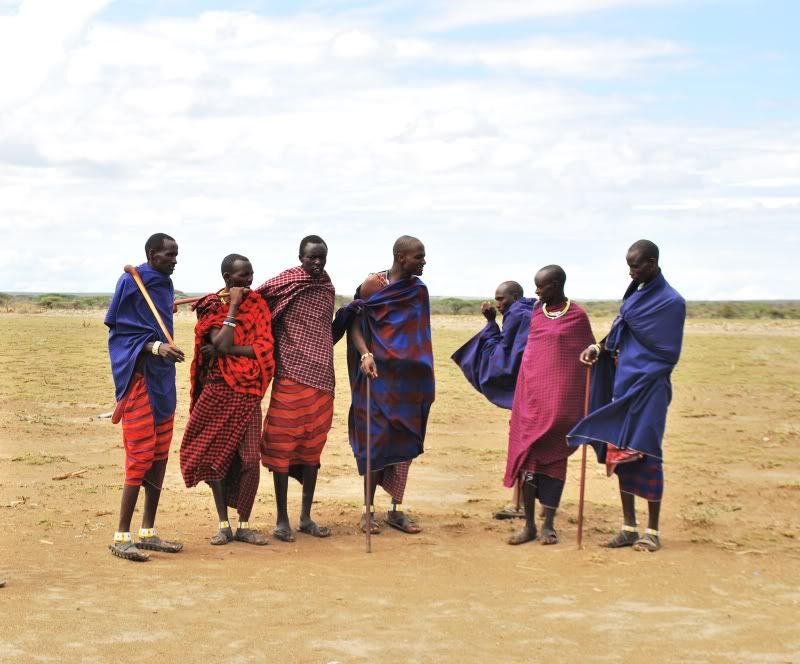
The southern migration takes place in December and so we were slightly early to catch the herds in full swing, but nonetheless, the Ngorongoro was one of the most unbelievable places I have ever been to visit.
We headed in to the park in an open top Land Cruiser at first light and began the slow, hour long drive to the ridge overlooking the crater area. We missed out on a decent view due to a thick fog settling in across the entire area, but managed to spot a few buffalo up nice and close, which I had grown to admire more and more every time I saw them. They are considered the most dangerous animal in Africa and when you get really close to them, with their long sweeping horns and massive 900kg frame, it's not hard to see why.
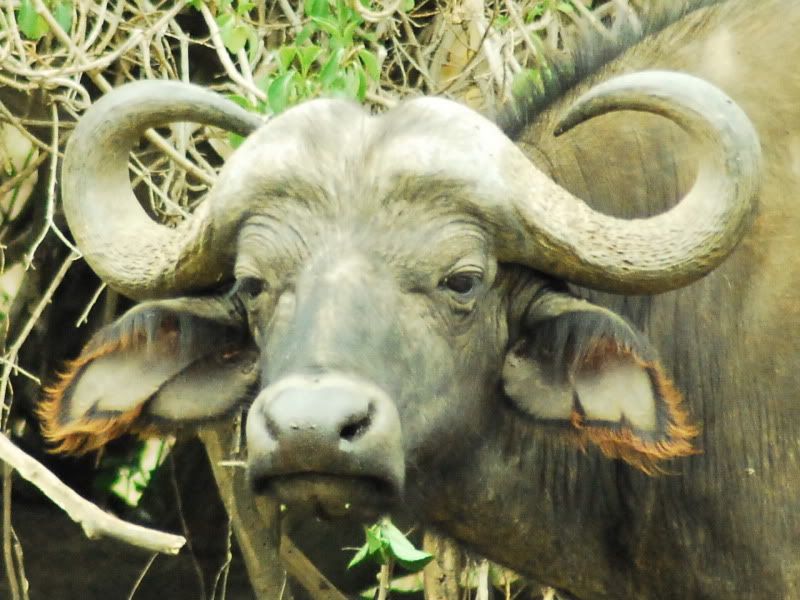
As we drove down in to the crater area I was amazed at the size of the caldera. There were a good number of zebra grazing close by and I thought of home and how much my mum would have loved to be here, watching her favourite animal in the wild.
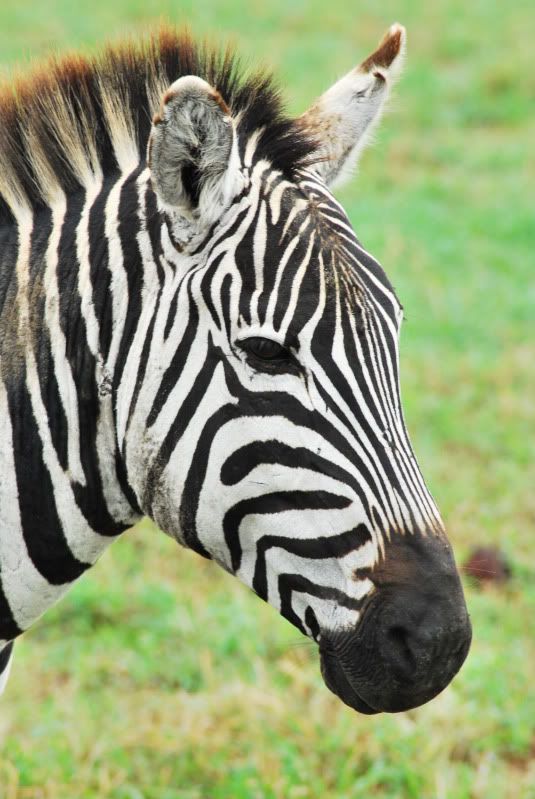
I spotted what I thought was a merekat, scurrying away about 20 metres from us, but on closer inspection it was identified by our guide as a honey badger. I have to be honest, I didn't really know much about these little creatures, but found great delight in watching this one scuttle along, then stop, poke his head up and sniff around and then dart off again. I made a comment as to how cute this little badger was... I was later to discover, upon chatting to our guide and then reading Peter Allison's
Dont Run, Whatever You Do, that this tiny mammal, no bigger than a domestic cat and looking like a cross between a skunk and a sloth, is one of the most feared animals in Africa! It's long claws, fearlessness, snake killing abilities, immunity to venom and tendency to attack the genitalia of larger animals has given it a fearsome reputation. Apparently this little guy has even been known to kill crocodiles up to 1m in length and my beloved, powerful buffalo!!!
Three black rhino! But too far in the distance for our Tamron lens to get a decent shot. Still I felt a jolt of excitement in seeing my first wild rhinoceros and a sense of relief that at least these three beautiful animals were still alive and well despite the huge pressures mankind is placing on them.
The Ngorongoro crater is said to have the densest populations of lion in the world, and sure enough, before lunch time we came across a group consisting of 3 females, a young male and an older male. It is such an incredible feeling to watch lions in the wild and although I had already spent a lot of time viewing them in Botswana, I was still just as thrilled this time as I was at my virgin experience (watching lions that is)! The group were about 50m away at first and as always, when a vehicle is stopped in a game park, it doesn't take long for a huge procession of other cars to congregate. There were about 6 land cruisers pulled up, watching the group silently from a distance, when the younger male stood up, gave a yawn, stretched his legs and began walking.... towards us. As slowly and noncholantly as ever and as if we did not even exist, the lion wandered over to the road and then proceeded to walk ever so calmly between the group of vehicles, brushed past ours and then wandered over to the other side of the road for a casual drink! It was a brilliant experience!

Some black-backed jackals, plenty of blue wildebeest, hartebeest, bull elephants, flamingos, a few secretary birds, crowned cranes, ostrich and one or two spotted hyena rounded off a great morning in the crater and we headed off to the Serengeti for a little more game driving and a night of camping.

Serengeti
Throughout the night many of the other campers could hear lions roaring in the distance. We were strongly advised not to get out of our tents throughout the night due to elephants, lions or leopards being known to roam through the campsite! The next morning, all the warnings and noises throughout the night were confirmed when, after a quick breakfast, we headed out for our day's game drive to find two young lionesses busily feasting on a freshly killed wildebeest no more than 50 metres down the road from the campsite!
Early on in the day we came across a lioness, around 4 years old who was beginning to stalk a large herd of zebra and wildebeest. We had learned that the two animals often move in herds together in a symbiotic relationship, due to the zebra's keen eyesight making up for the wildebeest's poor vision and the latter's strong nose making up for the former's poor sense of smell. We stayed for about 30 minutes and watched the lioness creeping quietly through the tall grass, stalking it's prey, all our fingers and toes crossed in the hope that we might be able to witness her taking down a kill.
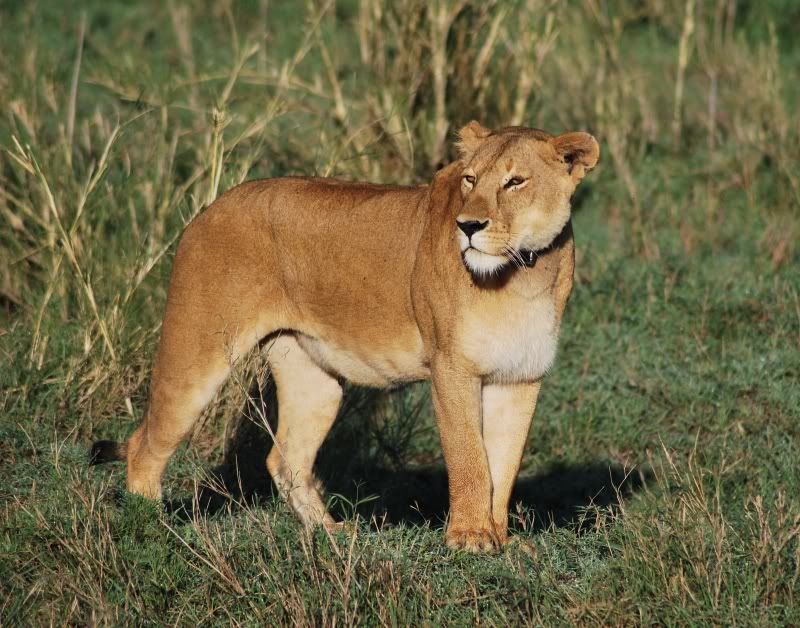
Eventually, some of the others in our group grew bored and gave up hope of the hunt and so we decided to drive off. No more than 20 minutes later, after making a short and uneventful loop, we came back across our lioness... and we were certain we could see fresh blood on her face!!! She was walking steadfastly in the opposite direction to the herd now and she began to make some low grunting noises. Immediately our guide called out to us, 'she's got cubs'! No sooner had the words come out of his mouth, than 3 baby cubs, all around 2 months old came bounding out from behind the bushes and started following their mother back to the kill. We had just missed getting to see the take down by only a few minutes!
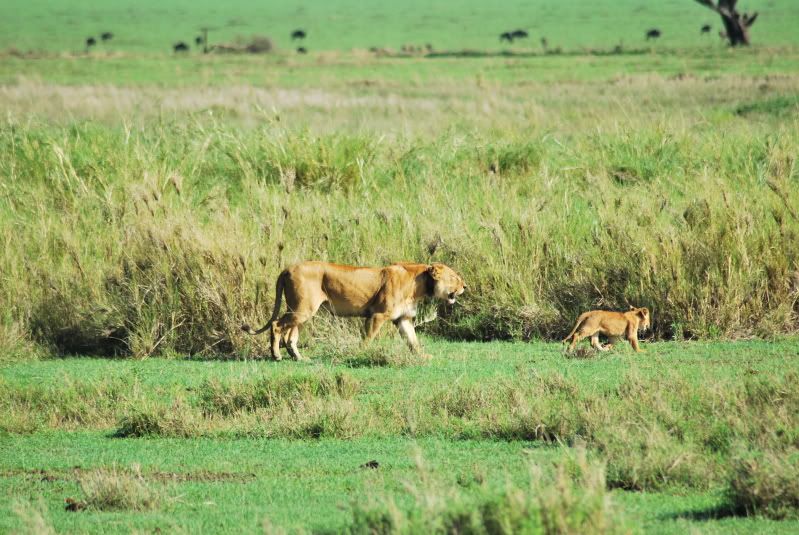
Advertisement
Tot: 0.08s; Tpl: 0.009s; cc: 6; qc: 43; dbt: 0.0361s; 1; m:domysql w:travelblog (10.17.0.13); sld: 1;
; mem: 1.1mb






